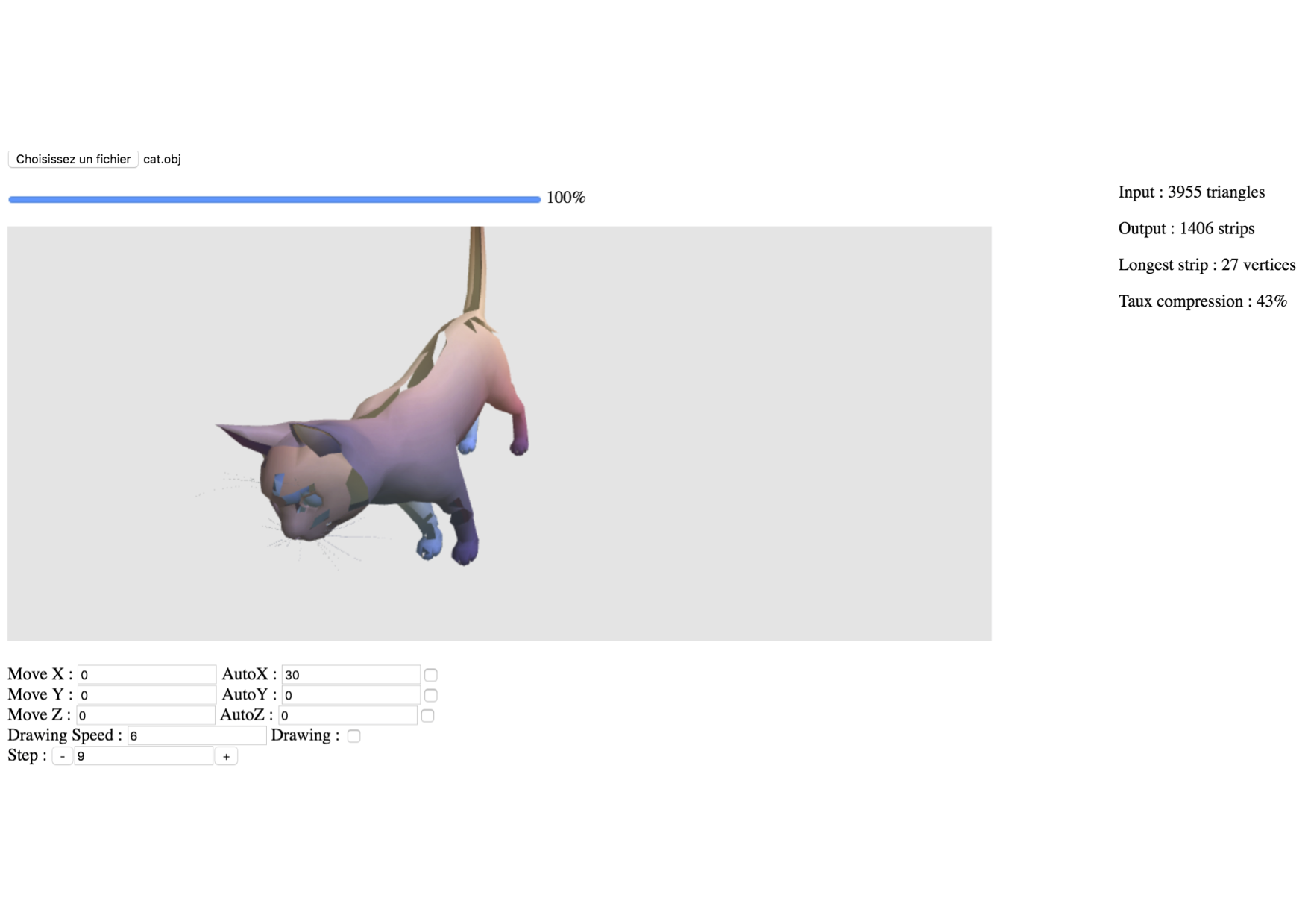Academic project to illustrate the topologic compression (lossless) principle. Instead of describe a mesh triangle by triangle, common sides are aggregated in strips. Despite its naive implementation, compression rate could reach up to 40% on simple meshes.
To illustrate those strips, a "toy web-interface" can vizualize this mesh-cutting, animating strips construction. Strips animation uses WebGL, modules are written in javascript (ES5) so you only require a WebGL-friendly browser (Chrome, Opera, FF, ...) to launch a demo !
If you want to test it locally,
git clone https://github.com/theplatypus/StripsCompression.git
cd ./StripsCompressionTo access interface without file access issues, you need to serve it through a HTTP server. There are many ways to do it, for example :
# if node.js & npm are installed
npm install
npm test
# python 2.7
python -m SimpleHTTPServer
# python 3.x
python -m http.server
# node.js & npm, general case
npm install http-server -g
http-server -p 8000Go to the following address with your WebGL-compatible browser
http://127.0.0.1:8000/demo/index.html
And you will get to the following toy application. (./DATA/cat.obj example)
This cat is a pretty good example, as we can see a long strip on its spine, and get a compression rate of 40%, which is quite good.
By default, stripes are drawed themselves, but you can stop it unchecking 'drawing' button, and see stripes construction step by step by increasing the footer counter.
If you want learn more about topologic compression, more details can be found in the more/ folder.
The files contained in the 'misc' folder are not from my own work. All credits go to their respective authors, linked below :
- frenchtoast747 for webgl-obj-loader
- (unknown author) for glutils
- James Coglan for sylvester
The files contained in the 'lib' folder are from my work. As the misc libraries, I provide them under the MIT License, so feel free to do whatever you want with it... and fork it !
